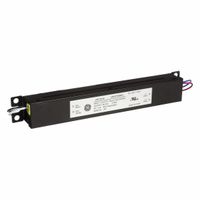- Home
- Lighting
- Ballasts Drivers
- Led Drivers
LED Drivers
LED drivers protect lamps from damaging fluctuations in the power supply that can reduce the quality of lamps' or arrays' light output. The drivers convert high-voltage alternating current (AC) into low-voltage direct current (DC) to power the arrays or lamps. LED drivers for fixture arrays install .....Read More
Frequently Asked Questions
What is an LED driver and how does it work?
How do LED drivers protect lamps from power fluctuations?
What are the differences between AC and DC in LED drivers?
How do you choose the right LED driver for your fixture?
What is the role of a dimmable LED driver in lighting systems?
How do you retrofit fluorescent fixtures with UL type C LED lamps?
What are the benefits of using LED drivers in lighting systems?


